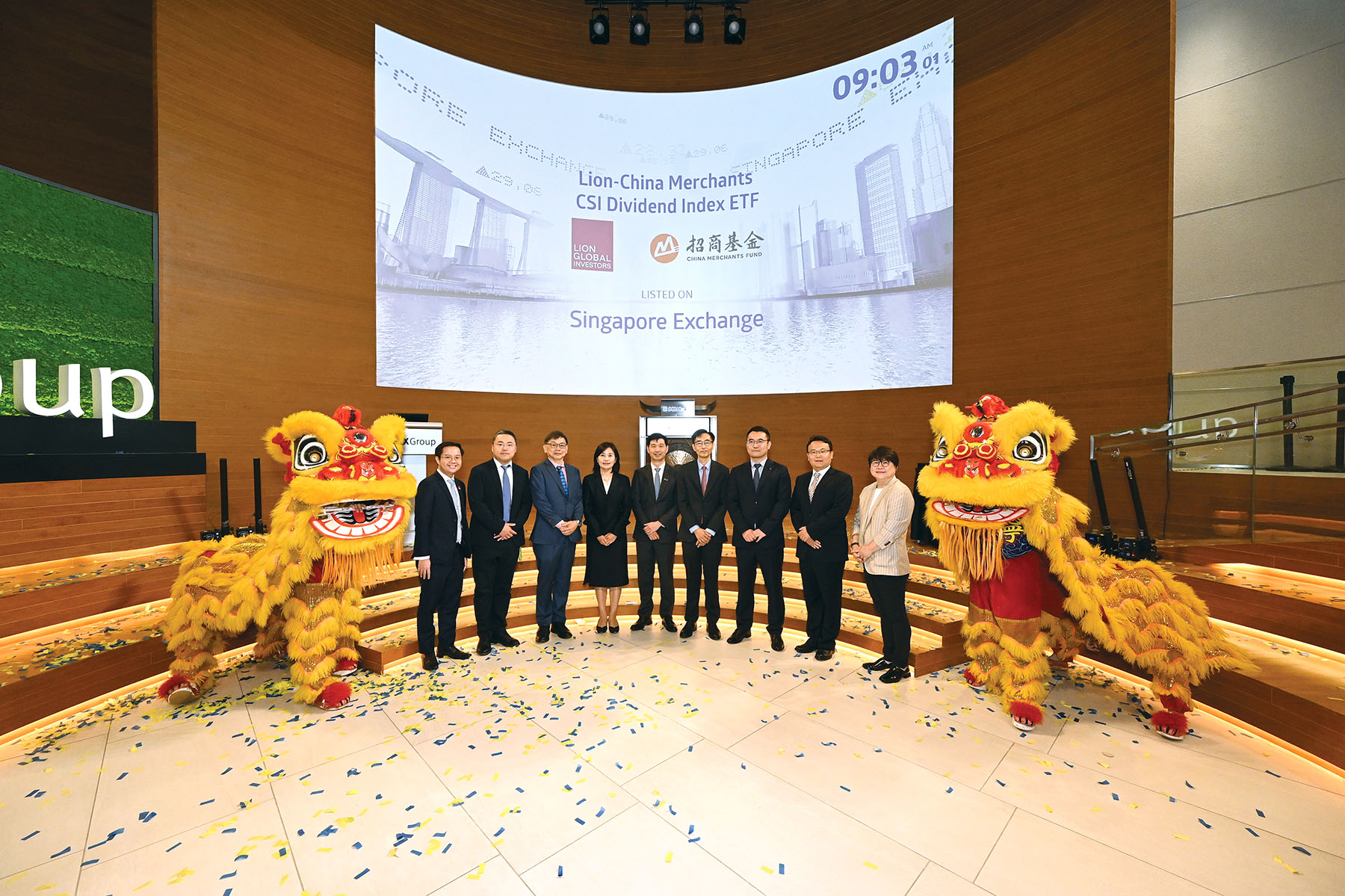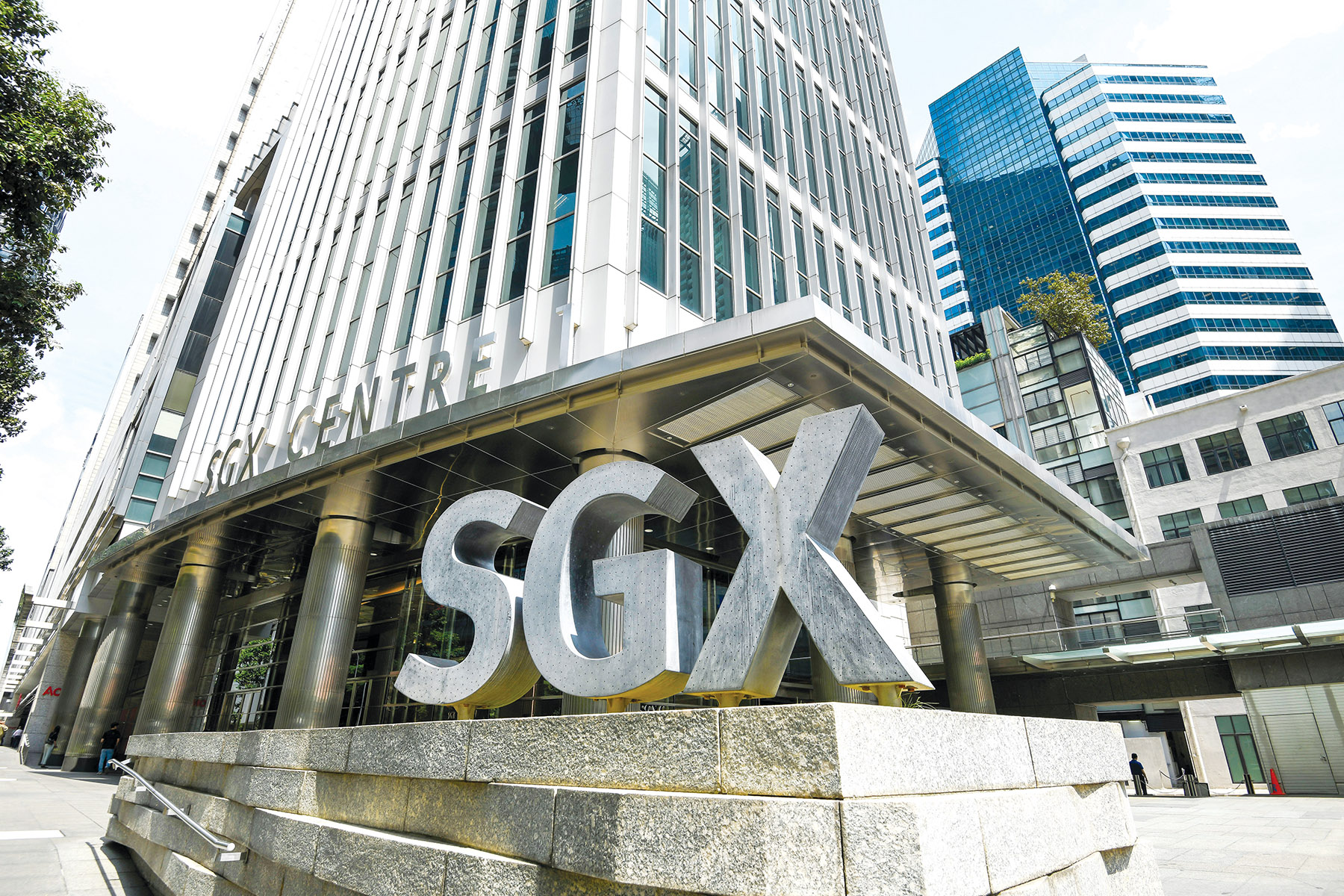Singapore’s bourse sees its close bonds with Chinese mainland enterprises as a catalyst for fueling the region’s historic technological transformation and producing the next ‘world champions’. Luo Weiteng talks to Singapore Exchange CEO Loh Boon Chye.

Shoving aside punishing United States tariffs that sparked a full-blown international trade war and the demise of rules-based globalization, 2025 is on the cusp of a sea change.
In good and bad times, capital markets have found themselves mired in pivotal moments on the rough road of transformation.
Singapore’s capital markets are embracing a whole package of reforms this year to facilitate listings on the Lion City’s bourse, with a paradigm shift to a more market-driven, disclosure-based regime. Bold moves include a new S$5 billion ($3.9 billion) program to give local equities a liquidity boost.
Collaboration is everything. Entrenched as a staunch supporter of and a flagbearer for cross-border cooperation, the Singapore Exchange seems destined for an even bigger slice of the stock market cake by nurturing ties with its counterparts on the world stage, notably big-time partners from the Chinese mainland.
READ MORE: China, Singapore bourses further bridge growing ETF markets
With China on a seemingly unstoppable path to dominating future technologies, SGX boss Loh Boon Chye lauds the “complementary strengths” shared by capital markets in the world’s second-largest economy and Singapore.
“Cross-border cooperation multiplies the effects of innovation,” says the CEO.
“China offers depth and scale, while Singapore brings connectivity and international reach,” says Loh, who has helmed the city’s bourse since 2015.
By market capitalization, some 30 percent of companies listed on SGX are overseas companies, of which nearly 30 percent are from the Greater China region. By number, approximately 35 percent of Singapore-listed companies are from outside the island country, of which nearly 50 percent are based in that region. The consumer electronics, aviation, shipbuilding and electric vehicle industries are where Chinese companies make their mark, highlighting the bourse’s global element and its closer bonds with China, Loh tells China Daily.
Among the most talked-about issuers is Chinese EV maker Nio, which debuted on the SGX in May 2022, offering investors a third venue to trade shares after New York and Hong Kong. The Shanghai-based EV manufacturer opted to list by way of introduction — an easier way for a company already listed elsewhere to join the Singapore market without selling new shares or raising money.
Loh has been a true witness to global investors’ appetite for Chinese capital markets in recent years, notably the technology and “new economy” sectors. China is producing some of the world’s most formidable companies and promising startups that have proven themselves to be genuine global innovators despite intense geopolitical pressure.
“The world is undergoing technological transformation. The global progress in artificial intelligence, advanced manufacturing and sustainable energy is reshaping industries, with China setting new benchmarks,” says Loh, who chairs the World Federation of Exchanges — a global association for exchanges and clearing houses.
“China’s economy is seeing a historic transition to high-quality, innovation-led development. The next global ‘champions’ will come from this region,” he believes, setting his sights on the Guangdong-Hong Kong-Macao Greater Bay Area to tap the near-unlimited potential of the nation’s most productive, vibrant geographical area.
Home to a population of over 87 million — roughly twice that of Spain — and with a GDP of more than $2 trillion, on par with that of Tokyo Bay, the Greater Bay Area offers potentially huge opportunities for those with the foresight to jump on the bandwagon.

Deepening ETF connection
“Shenzhen, a city of innovation and entrepreneurship, is at the forefront of change,” says Loh.
SGX has forged a fruitful partnership with the Shenzhen Stock Exchange. The two bourses agreed to establish an exchange-traded fund program in 2021, allowing investors in both markets to access feeder ETFs linked to locally listed ETFs on each other’s exchanges. This was followed by the creation of an ETF linkup between SGX and the Shanghai Stock Exchange in 2023 to deepen cross-border connectivity for issuers and investors in Singapore and on the Chinese mainland.
The China-Singapore ETF connect has seen its assets under management grow threefold in the past two years to nearly S$630 million. Nine ETFs had been launched as of April, with four having gone public on the Shenzhen bourse.
Loh sees expanding the number of ETFs on the cross-listing program as a means to make it a more compelling example of the interconnection between the two economies’ capital markets. There is also much room for expansion as the combined AUM of all SGX-traded ETFs that track China-related assets now stands at S$1.3 billion, offering a glimpse of the nation’s burgeoning ETF market, where nearly 50 ETFs have garnered a record S$13.8 billion in total AUM in April.
The ETF program is also a strong, well-timed response to global investors’ burning desire to get hooked onto the next big story unfolding in the world’s second-largest economy, making the nation’s emerging industries of strategic importance readily accessible, says Loh. It also meets the untapped demand of Chinese domestic investors for wider offshore exposure.
Also seeking wider overseas markets are Chinese innovative companies that have been put on the global map with the nation’s tech ascent and its quest for new quality productive forces.
Loh believes SGX has all that’s required of a “launch pad” for native Chinese businesses going global. And the Greater Bay Area, which a constellation of prominent companies call home, could be the center of gravity.
The SGX chief harbors high hopes for even closer cooperation with the Shenzhen and Shanghai bourses in developing indexes, paving the way for rollouts of more ETFs based on these broad-based or sector-specific indices. Here, a similarly audacious vision is to cover some of the largest economies and biggest companies across Asia that capture the world’s imagination.

Riding the tech wave
In Loh’s view, the breathtaking, awe-inspiring power and sheer wildness of technology, or AI to be precise, offer all the elements required to be an integral part of the efficiency, and no exchange can afford to miss the boat. As technology evolves over time, “it will be natural to see more up-and-coming AI-related companies to expand and look for capital”.
The game-changing technology also calls for exchanges and regulators worldwide to strike a delicate balance between wider adoption and ensuring transparency and integrity. At the heart of the increasingly interconnected global financial system lies collaboration.
Indeed, SGX is working hard pressing home its advantages as the operator of a fair, orderly, transparent market with structural reforms. The Monetary Authority of Singapore, the country’s central bank, established a review group in August last year to recommend measures to make the financial hub a fundraising magnet for prominent international companies. A related report is expected to be completed by this August.
The MAS and the market’s front-line regulator, the Singapore Exchange Regulation, are launching consultation exercises on proposed regulatory changes in phases. This includes proposed measures for a more disclosure-based approach characterized by a pro-enterprise stance and undertakings to strengthen investor confidence.
ALSO READ: Singapore Exchange to list open-ended bitcoin futures contracts
From boosting investor demand to attracting quality listings and streamlining regulations, the pursuit of openness, neutrality and international engagement means a lot against a radical shift toward protectionism and nationalistic agendas that could unravel decades of economic interdependence.
Southeast Asia wants greater collective efforts to turbocharge its green transition to sustainable growth.
Loh says this is where Chinese domestic investors and companies’ robust interest in low-carbon themes could come into play. Particularly interesting is that China’s energy and EV enterprises are on track to take Chinese renewable energy supply chains overseas, vying for a fair share of green opportunities across Southeast Asia.
Singapore, he says, is poised to be a strategic pivot, with the backing of SGX’s strong portfolio of multiasset offerings.
Contact the writer at sophialuo@chinadailyhk.com


